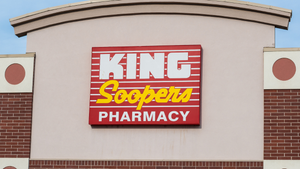BUZZ IS RETAIL WILL HEAD TELECARD SALESBUZZ IS RETAIL WILL HEAD TELECARD SALES
BOSTON -- Atlantic-ACM, a strategy consulting firm based here that monitors the prepaid phone-card industry, projects that retail will overtake the promotional sector of the industry by the year 2000.. By the year 2000, retail sales will have shot up to 58% of all sales. It's estimated that prepaid cards will grow to a $2.5 billion business within the next three years, said Judy Reed Smith, chief
February 17, 1997
BOSTON -- Atlantic-ACM, a strategy consulting firm based here that monitors the prepaid phone-card industry, projects that retail will overtake the promotional sector of the industry by the year 2000.
. By the year 2000, retail sales will have shot up to 58% of all sales. It's estimated that prepaid cards will grow to a $2.5 billion business within the next three years, said Judy Reed Smith, chief executive officer of Atlantic-ACM.
This year about $1.1 billion will be generated in prepaid phone-card sales. The compound annual growth rate is estimated at 27%, reflecting a slowdown from the last two years of the telecard industry.
"The slowing growth may reflect a realization among providers that prepaid phone cards are not a sure thing and don't sell themselves," said Smith.
What will drive future sales, said Smith, is increased distribution and greater visibility through promotional giveaways and mass advertising. Ad and marketing programs such as Sprint's Mother's Day national television advertising for its Spree FonCard were cited as a good example of how phone-card marketers can increase public exposure.
With 96% of the population never having used phone cards, there appears to be a great potential for growth, said Smith. The primary buyers of prepaid cards will continue to be students, foreigners, military personnel, travelers and those with no credit.
Greater distribution will come from vending machines, with many supermarkets getting into phone-card vending because of security and labor costs; automatic teller machines at banks and other retail outlets; convenience stores and multilevel marketing organizations.
Besides retail, promotions will continue to represent a good portion of the market, projected to be 29% by the year 2000. Other market segments include collectibles, projected to represent 2% of the business by the year 2000, and fund raising, 11%. Smith pointed to growth in other segments, such as information service. This could displace 900 number pay-per-call services and eliminate uncollectibles associated with post-paid pay-per-call, Smith said. An example is Future Call's Star Trek card series, which offers only "infotainment" without long-distance calling service.
The growth at retail will also increase the number of enhanced services offered by prepaid phone-card suppliers. There are already features such as replenishment, custom prompts, foreign language, speed dialing and interactive voice response and voice mail that are being built into cards, said Smith.
You May Also Like




